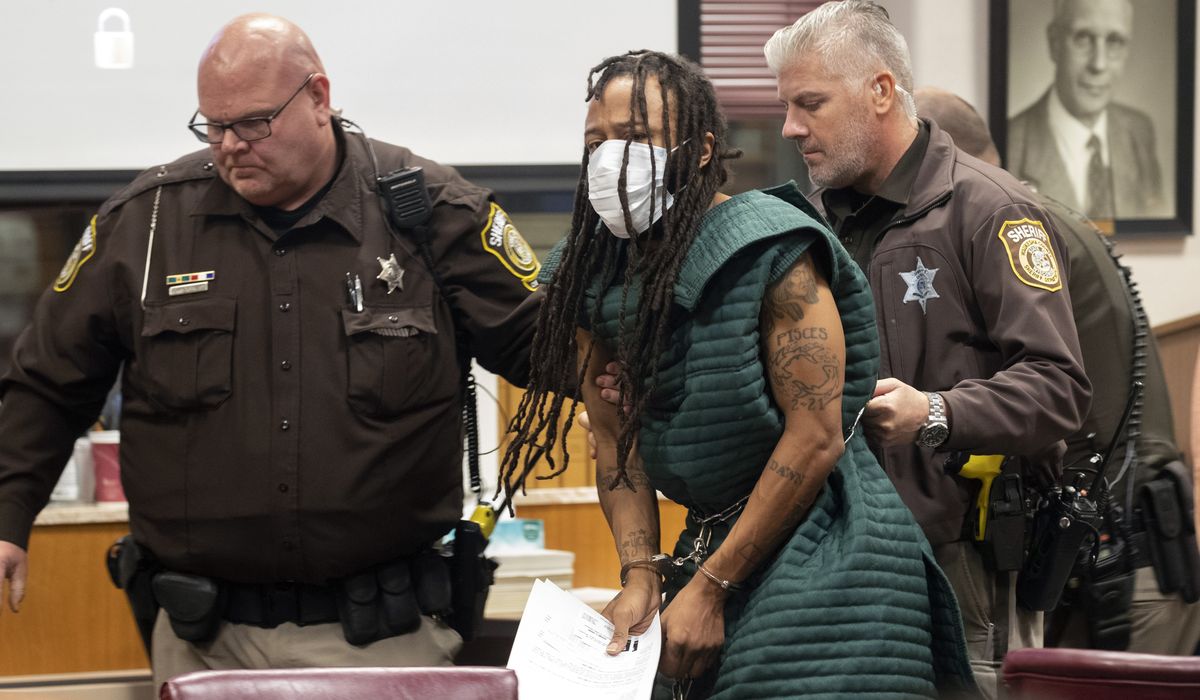
OPINION:
Last Tuesday, Erick Tiegs, 16, returned home from the hospital. He was the final student discharged after being struck with an SUV while marching in Waukesha, Wisconsin’s annual Christmas parade last month. He was playing the trombone when he was hit.
The band teacher, Sarah Wehmeier-Aparicio, gave credit to the instruments for keeping some of her students alive.
“We did hear our sousaphone, which is the marching version of the tuba, the doctor said that probably saved (the student’s) life because the way it wrapped around him, it created a barrier that protected him as the car went over,” Ms. Wehmeier told the local ABC News station on Dec. 4 of the Nov. 21 terror attack. “He said, ‘Thank goodness for that sousaphone, it saved your life.’”
She went on to describe the horror she felt when the music stopped playing, seeing the SUV drive through her band, and hearing gunfire as the police shot at the vehicle. The SUV came within inches of taking her life.
Last month, Darrell Brooks Jr., a Black man with a long rap sheet, was accused of the crime, which killed six people, including an 8-year-old boy, and injured more than 60 others. After Mr. Brooks was identified as the suspect, the mainstream media and the Biden administration promptly decided the story wasn’t worth airing or the victims worth being consoled.
Last week, when traveling to Michigan to tout his “Build Back Better” agenda, President Biden had to fly over Wisconsin. When asked if he would meet with grieving victims of the Waukesha attack, his press secretary said the trip “requires a lot of assets” and hadn’t been planned. There’s still no trip on Mr. Biden’s schedule.
Shortly after Mr. Brooks was identified as the alleged perpetrator, MSNBC, CNN and CBS framed their coverage as a “parade crash,” not “domestic terrorism.” It was as if the car had committed the crime. Mr. Brooks has claimed he feels like he’s being “monster — demonized.”
This weekend, no one in the mainstream news media brought up Waukesha or tried to profile Mr. Brooks and speculate on his motivations — it was as if the event never transpired.
This, of course, is intentional.
Since career criminal and drug addict George Floyd’s death last summer, the left has tried to gin up their base by amplifying racial animus.
However, the narrative only goes one way: white citizens discriminating against Black citizens and the need for “criminal-justice” reform, like eliminating cash bail; progressive district attorney’s declining to prosecute drug, gun and shoplifting offenses; and, in the case of squad member Rep. Rashida Tlaib, eliminating federal prisons altogether.
This is the reason why the media reported the Black Lives Matter rioting in cities across America as “mostly peaceful protests” and racialized the Kyle Rittenhouse saga — to further their political agenda. Mr. Biden quickly referred to Mr. Rittenhouse as a “White supremacist” and “vigilante” before Mr. Rittenhouse was acquitted by a jury for self-defense.
The acquittal sparked outrage among those in the mainstream media, who dubbed it another case of the criminal justice system favoring White men. In building their narrative, however, they failed to mention Mr. Rittenhouse shot three other White men, one of which pointed a gun at him, another who swung a skateboard at him, hitting him in the head and the neck, and the last who chased him into a used-car dealership.
For a press so concerned about race, it would seem they would want to follow up on Mr. Brooks’ social media posts, which called for violence against White people and that praised Hitler for killing Jews. All six who died in Waukesha were White.
According to The Sun, Mr. Brooks rapped about being a terrorist and a “killer in the city,” yet the police have ruled out terrorism. Imagine if the suspect was a White, MAGA-loving man. It’s hard to imagine “domestic terrorism” would be ruled out if he posted animus against Black people or dared to call the 2020 presidential election “rigged,” let alone indicated he supported Hilter.
In the case of Waukesha, the media has gone colorblind, and its emerging narrative is too unsavory for their “journalists” to report on, let alone expose, as it may undermine their progressive agenda.
It’s been said before, but it’s worth repeating: The biggest bias in journalism is not what is reported, but what is intentionally not reported.
In the case of Waukesha, that’s another tragedy.
• Kelly Sadler is the commentary editor of The Washington Times.








